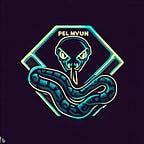Domain-Driven Design Patterns: Domain Objects and Aggregates
Introduction
Domain-Driven Design (DDD) is a methodology that aims to align software development with the complex realities of a business domain. At the heart of DDD are domain objects and aggregates, powerful design patterns that play a pivotal role in creating robust and maintainable software. In this article, we delve into the world of DDD to understand what domain objects and aggregates are, their significance, and how they can be used effectively to model complex business domains.
Domain Objects: The Building Blocks of DDD
In DDD, a domain object represents a concept or entity from the real-world business domain that the software is modeling. These objects encapsulate both data and behavior related to the domain, making them self-contained and coherent. Domain objects are characterized by the following key attributes:
class Product:
def __init__(self, sku, name, price):
self.sku = sku # Unique identifier for the product
self.name = name # Name of the product
self price = price # Price of the product
def __str__(self):
return f"{self.name} (SKU: {self.sku}) - Price: ${self.price:.2f}"Aggregates: Ensuring Consistency and Boundaries
While domain objects are essential building blocks, aggregates take the concept a step further by defining boundaries and transactional consistency rules within the domain. An aggregate is a cluster of domain objects that are treated as a single unit, ensuring that all changes to the aggregate’s state are consistent. Aggregates help maintain data integrity and encapsulate complex business rules.
class Order:
def __init__(self, order_number, customer):
self.order_number = order_number # Unique order identifier
self.customer = customer # Customer placing the order
self.line_items = [] # List of line items in the order
def add_line_item(self, product, quantity):
# Create a line item for the order
line_item = LineItem(product, quantity)
self.line_items.append(line_item)
def calculate_total(self):
# Calculate the total order amount based on line items
total = sum(item.calculate_subtotal() for item in self.line_items)
return total
class LineItem:
def __init__(self, product, quantity):
self.product = product # Product in the line item
self.quantity = quantity # Quantity of the product in the order
def calculate_subtotal(self):
# Calculate the subtotal for the line item
subtotal = self.product.price * self.quantity
return subtotalThe provided code represents a fundamental example of implementing the concept of aggregates in the context of domain-driven design (DDD). In DDD, aggregates are clusters of domain objects that are treated as a single unit, ensuring transactional consistency and encapsulating complex business rules within the domain.
Here’s a breakdown of the code:
Order Class:
- The
Orderclass represents an aggregate. - It has attributes such as
order_number(a unique order identifier),customer(the customer placing the order), andline_items(a list of line items in the order). - The
add_line_itemmethod allows adding line items to the order. It creates aLineItemobject and appends it to theline_itemslist. - The
calculate_totalmethod calculates the total order amount based on the line items by summing the subtotals of each line item.
LineItem Class:
- The
LineItemclass represents another domain object within the aggregate. - It has attributes such as
product(the product in the line item) andquantity(the quantity of the product in the order). - The
calculate_subtotalmethod calculates the subtotal for the line item by multiplying the product's price by the quantity.
This code models an order as an aggregate, where an order consists of multiple line items. The Order class serves as the root of the aggregate, and it encapsulates the business logic for managing line items and calculating the total order amount. The LineItem class represents an entity within the aggregate, responsible for managing the details of individual products and quantities within an order.
Benefits of Domain Objects and Aggregates in DDD
- Maintainability: DDD patterns make it easier to maintain and evolve software systems over time. Changes to the business domain can be localized within aggregates, minimizing the impact on the rest of the system.
- Scalability: Aggregates provide natural boundaries, allowing for parallel development and scalability. Different teams can work on different aggregates without stepping on each other’s toes.
- Domain Focus: DDD encourages a deep understanding of the business domain, resulting in software that closely aligns with real-world requirements.
- Consistency and Integrity: Aggregates ensure data consistency, preventing invalid or inconsistent states within the domain.
Conclusion
Domain objects and aggregates are fundamental building blocks in Domain-Driven Design (DDD) that help create software systems closely aligned with complex business domains. By encapsulating data, behavior, and rules within these patterns, developers can build maintainable, scalable, and robust applications that evolve with the changing needs of the business. Embracing DDD and mastering the use of domain objects and aggregates can be a game-changer in software development, promoting better collaboration between technical and domain experts and delivering more valuable solutions to businesses.
That’s it for this article! Feel free to leave feedback or questions in the comments. If you found this an exciting read, leave some claps and follow! I love coffee, so feel free to buy me a coffee; XD. Cheers!
